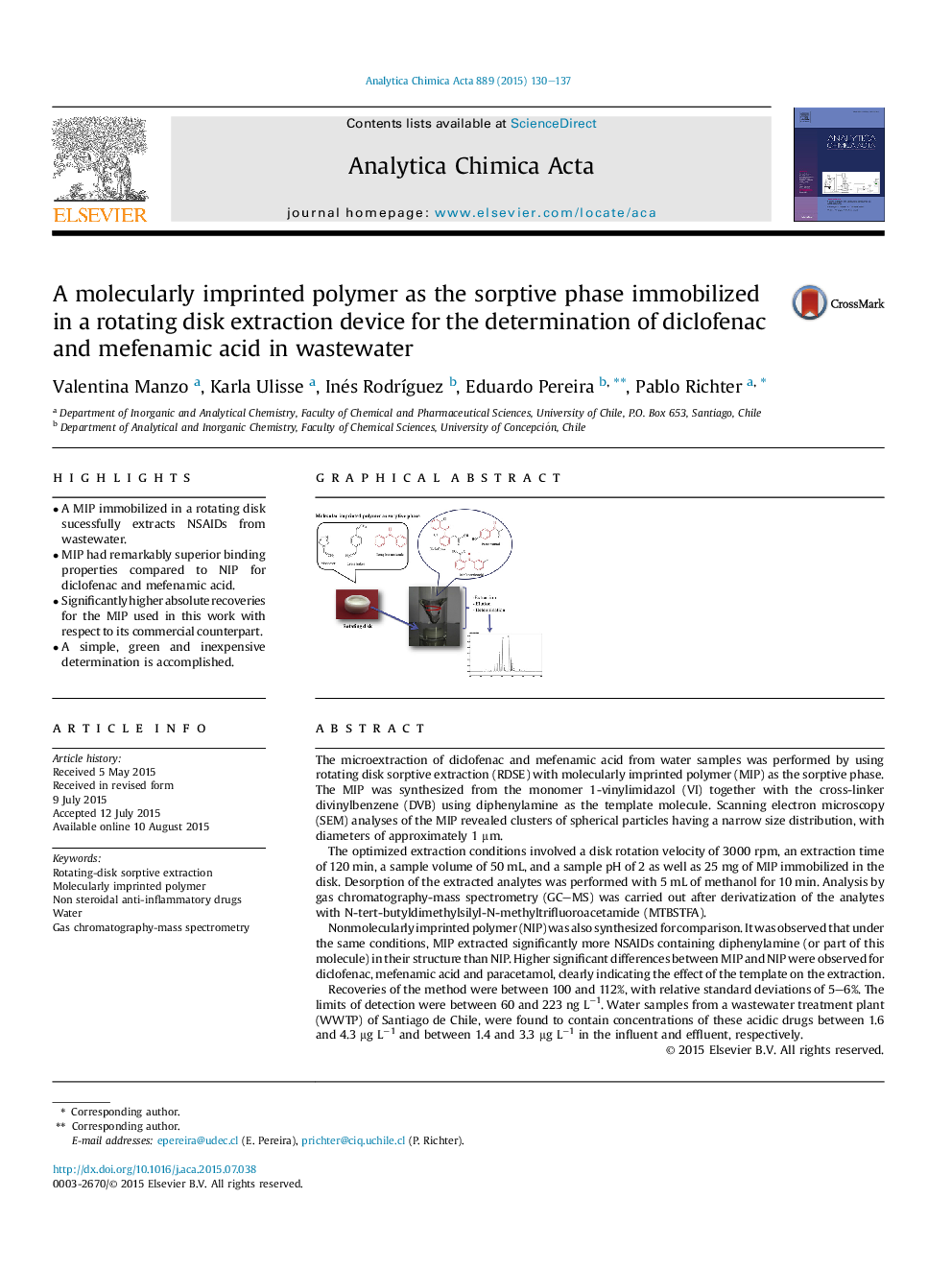| Article ID | Journal | Published Year | Pages | File Type |
|---|---|---|---|---|
| 1163508 | Analytica Chimica Acta | 2015 | 8 Pages |
•A MIP immobilized in a rotating disk sucessfully extracts NSAIDs from wastewater.•MIP had remarkably superior binding properties compared to NIP for diclofenac and mefenamic acid.•Significantly higher absolute recoveries for the MIP used in this work with respect to its commercial counterpart.•A simple, green and inexpensive determination is accomplished.
The microextraction of diclofenac and mefenamic acid from water samples was performed by using rotating disk sorptive extraction (RDSE) with molecularly imprinted polymer (MIP) as the sorptive phase. The MIP was synthesized from the monomer 1-vinylimidazol (VI) together with the cross-linker divinylbenzene (DVB) using diphenylamine as the template molecule. Scanning electron microscopy (SEM) analyses of the MIP revealed clusters of spherical particles having a narrow size distribution, with diameters of approximately 1 μm.The optimized extraction conditions involved a disk rotation velocity of 3000 rpm, an extraction time of 120 min, a sample volume of 50 mL, and a sample pH of 2 as well as 25 mg of MIP immobilized in the disk. Desorption of the extracted analytes was performed with 5 mL of methanol for 10 min. Analysis by gas chromatography-mass spectrometry (GC–MS) was carried out after derivatization of the analytes with N-tert-butyldimethylsilyl-N-methyltrifluoroacetamide (MTBSTFA).Nonmolecularly imprinted polymer (NIP) was also synthesized for comparison. It was observed that under the same conditions, MIP extracted significantly more NSAIDs containing diphenylamine (or part of this molecule) in their structure than NIP. Higher significant differences between MIP and NIP were observed for diclofenac, mefenamic acid and paracetamol, clearly indicating the effect of the template on the extraction.Recoveries of the method were between 100 and 112%, with relative standard deviations of 5–6%. The limits of detection were between 60 and 223 ng L−1. Water samples from a wastewater treatment plant (WWTP) of Santiago de Chile, were found to contain concentrations of these acidic drugs between 1.6 and 4.3 μg L−1 and between 1.4 and 3.3 μg L−1 in the influent and effluent, respectively.
Graphical abstractFigure optionsDownload full-size imageDownload as PowerPoint slide
